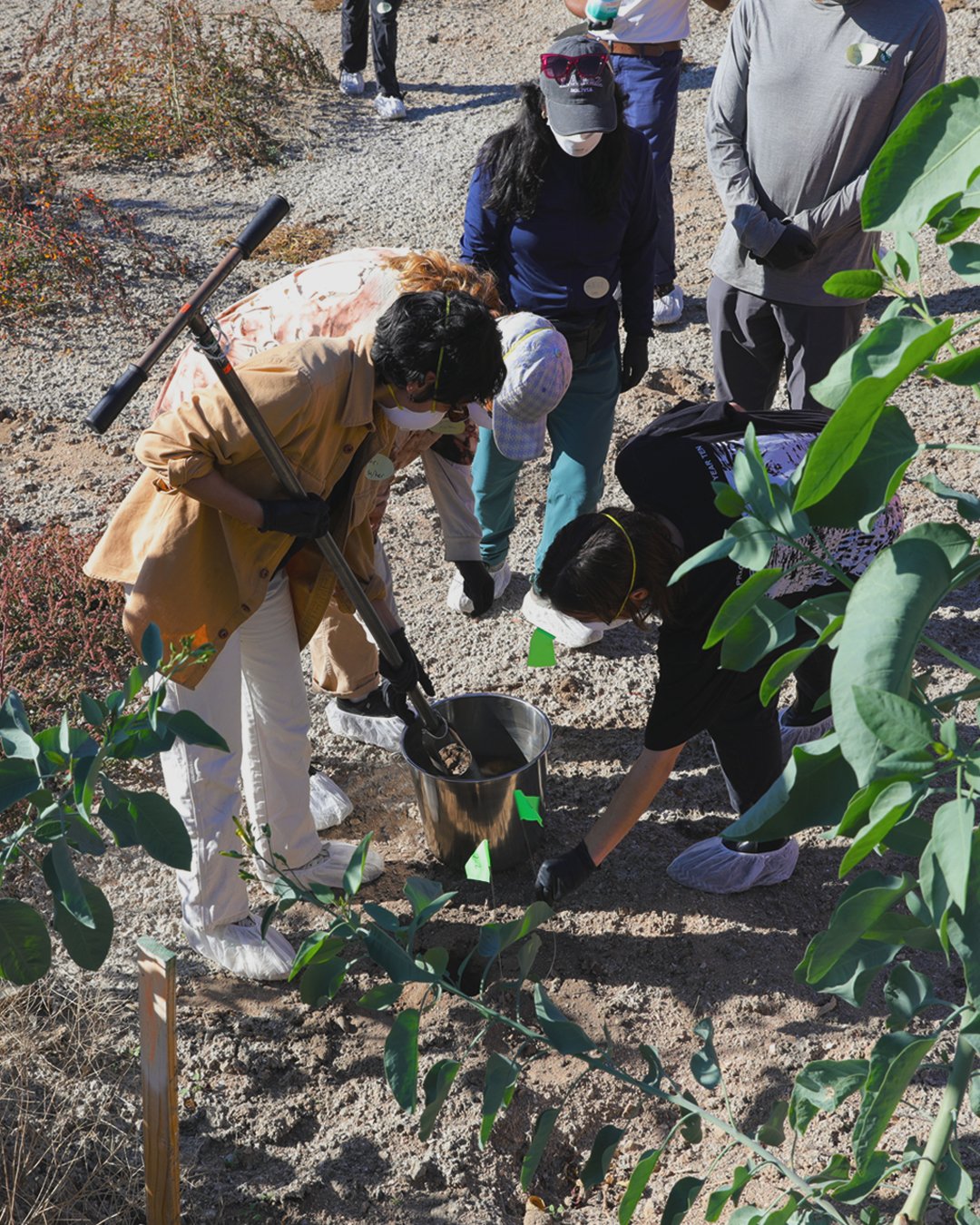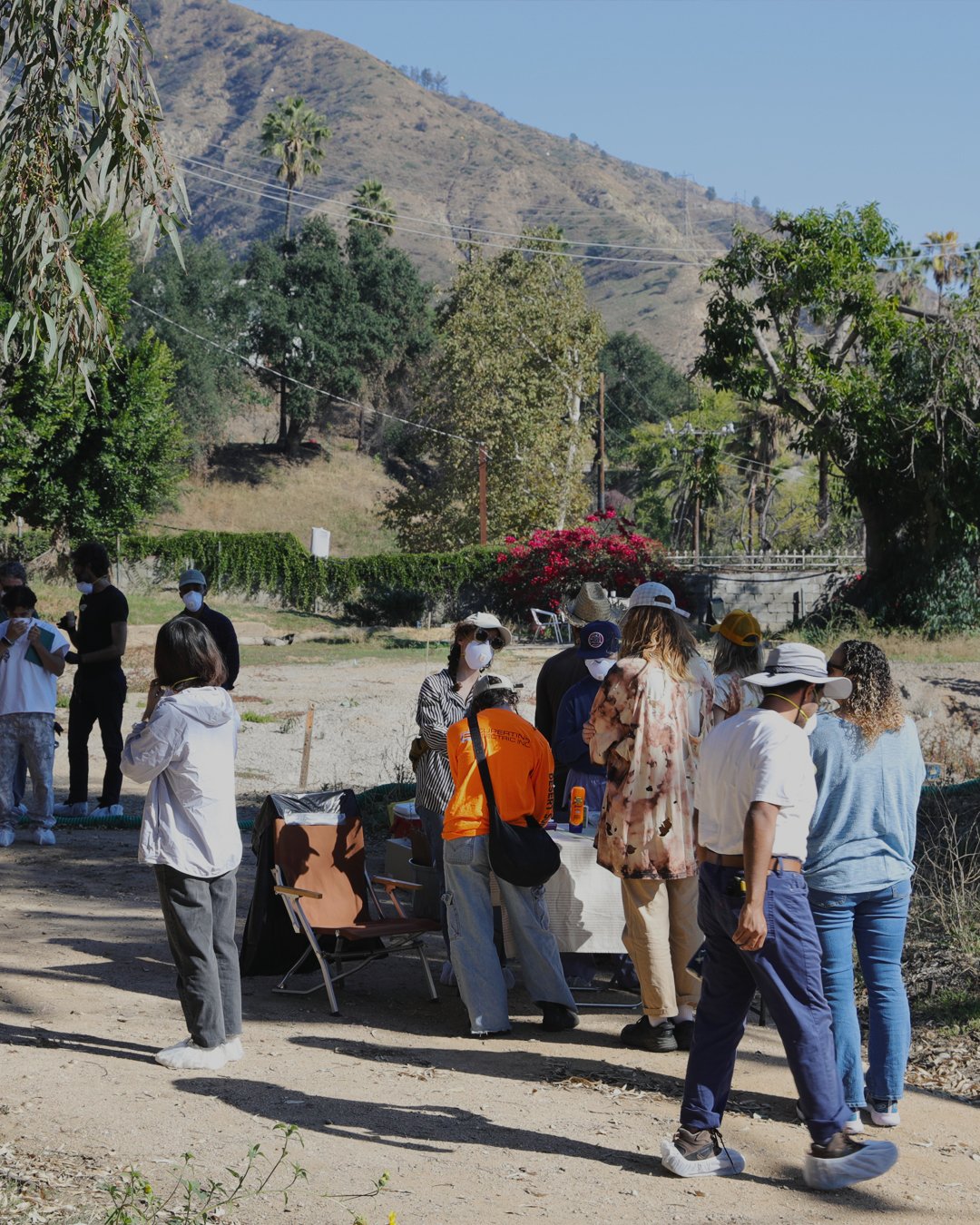Sense/Make
An interdisciplinary workshop series exploring ecological remediation at the intersection of creative practice.
Image credit: Adam Armengual Slauson
Join us for a three-part interdisciplinary series led by Dr. Danielle Stevenson of the Centre for Applied Ecological Remediation (CAER) in collaboration with Trade School. Together, we’ll learn the basics of bioremediation including soil toxicity and ecological healing using fungi, microbes, and plants.
Meet a community of creative practitioners as we explore the poetic, political, and material dimensions of remediation: What stories live in the soil? What residues remain? And how might we compost harm into new forms of care?
Designed for artists, scientists, musicians, land stewards, and community members, each session blends ecological fieldwork, creative process, and collective reflection. No experience necessary—just curiosity, presence, and a willingness to get your hands dirty.
Workshop 1: Bioremediation 101—A Zine Workshop
October 11 | Trade School, Altadena, CA
How do we heal land and make meaning in the process? Can ecological remediation and creative practice bolster one another?
Join us for Bioremediation 101, the first of the three-part interdisciplinary series, Sense/Make, led by Dr. Danielle Stevenson of the Centre for Applied Ecological Remediation (CAER) to learn the basics of bioremediation theory and history including working with contaminated soils and employing fungi and plants for ecological healing. Through a combination of lecture and guided discussion, we’ll interlace case studies of Superfund sites and community gardens with personal stories of pollution in everyday life. Finally, we’ll synthesize the day’s findings in a hands-on zine-making workshop led by Arden Stern, a scholar of U.S. visual culture and co-founder of Trade School. Take your zine home or make copies to swap it with others!
Tea service provided by Shanhuan Manton.
Workshop 2: Fieldwork—Composing Soil
November 8 | Remediation Plot, Altadena, CA
Join us in the field at a bioremediation site! Learn about land through sensory experiments and create a collaborative “composition.”
What forms of life are present on a contaminated site? How do we attune ourselves to their needs in order to support a path to healing?
Join us for Fieldwork— Composing Soil, the second of the three-part interdisciplinary series, Sense/Make, in which we explore the ways in which ecological remediation and creative practice bolster one another. No previous workshop participation necessary.
Beginning on a field site in Altadena, learn how to safely interact with and explore a contaminated site with Dr. Danielle Stevenson of the Centre for Applied Ecological Remediation (CAER). Investigate the composition of soil by taking and analyzing environmental samples and attending a demonstration of remediation in-the-field. Tune in to land, plants, and fungi through sensory experiments in field sketching and recording led by Arden Stern and Casey Anderson, co-founders of Trade School.
Afterwards, gather at Trade School to assemble field notes into a shared "composition" of the day and enjoy seasonal soup by Altadena-based Sparkles Soup. Sketching and recording materials will be provided, though you're welcome to bring your own.
All participants will need to complete a waiver for entry onto a contaminated site. Proper PPE (including masks, gloves, and boot covers) will be provided. The first part of the workshop takes place at a remediation site where there will be limited hospitality and no facilities.
Workshop 3: Lab—Microbes & Monsters, Tools for Healing
December 13 | CAER Lab, Torrance, CA
See microbial life in post-fire soils through a microscope. Reflect on ecological legacies through monster narratives and collective assemblage.
What tools do we have to investigate the invisible forces that both fray and reweave the webs of our ecological relations? How do practical bioremediation skills support the larger project of cultural remediation? How can we understand our stories as inseparable from the residue of monstrous legacies?
Join us for Lab—Microbes & Monsters, Tools for Healing, the final part of the three-part interdisciplinary series Sense/Make, in which we explore how ecological remediation and creative practice can bolster one another. No previous workshop participation is necessary.
We’ll begin with a laboratory-based investigation led by the Centre for Applied Ecological Remediation (CAER) at their new space in DTLA! Using guided microscopy, we will visualize soil contamination and the microbial life working to restore soil health by studying samples taken from a post-fire remediation site in Altadena. Dr. Danielle Stevenson will discuss how fungi interact with pollutants and demonstrate how to extract spores from soil samples to cultivate microbial cultures. Then, with guidance from filmmaker and cultural practitioner Shanhuan Manton, we’ll explore technologies for cultural healing such as collective storytelling, mythology, and creating monster narratives. Shanhuan will lead us in a reflection on how our relationships and ways of living have brought about pollution crises and embedded intergenerational traumas in the soil we depend on for life. Finally, through found-object assemblage, we will collectively create a sculptural manifestation of the monsters we face—and then perform a fungal inoculation to transform and biodegrade these monsters, assuaging them with acts of care.
Image credit: Adam Armengual Slauson
Image credit: Adam Armengual Slauson
Image credit: Adam Armengual Slauson










